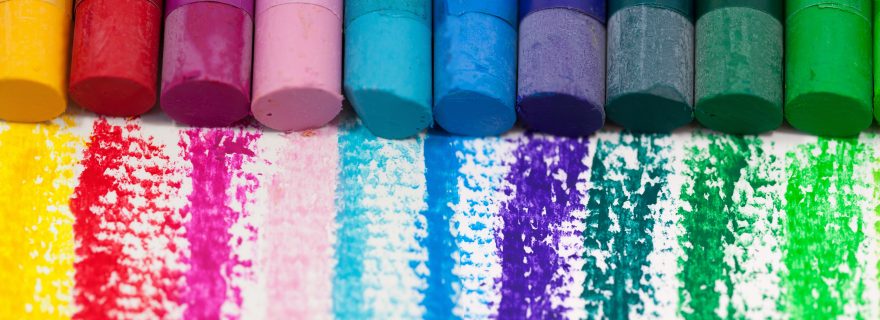What color vision tells you about your brain and multitasking potential
Some of you are better than others at distinguishing between colors. What can this tell you about your brain state and multitasking performance?
We often take for granted that we can discriminate between colors, which makes it easy to forget that others might see colors differently than you do. The whole world was reminded of this fact two years ago when the internet exploded because people could not agree on the color of “the dress”. This viral meme highlighted that we might all see the world, and the colors in it, in a different way. “Why is that”, you ask? Well, turns out there is this important brain chemical called dopamine that not only influences how often you blink per minute; it also affects how good you are at discriminating colors.
How do we know dopamine is important for color vision? Well for example, color vision gets worse when dopamine is functioning abnormally in the brain (for example in the case of Parkinson’s disease, ADHD and even normal aging). We also know color vision is impaired by drugs that lower dopamine activity (such as antipsychotics or long-term cocaine use). When talking about the effect of these drugs on dopamine, it is good to know that dopamine does its important work by connecting to one of two types of “receivers” in the brain; we call them “receptors”. When dopamine connects to so-called D1 receptors, it helps you stay mentally persistent in pursuing your goals and ignoring distractions. When dopamine connects to so-called D2 receptors, it helps you be mentally flexible in switching between different tasks. Interestingly, the drugs that impair color vision often also block (or on the long term even destroy) in particular the D2 “flexibility” receptors. So these receptors may be especially important for color vision.
My colleagues and I were interested in exploring that idea. Is color vision related to the dopamine receptors that support mental flexibility? In order to find out, we did what we almost always do in science: search for evidence supporting this idea. We did so by looking at individual differences in color vision and multitasking performance, because multitasking has different relationships with the persistent D1 and flexible D2 receptors. Let’s discuss that a bit more.
Multitasking is something we do every day. It involves doing two tasks at the same time or very quickly after one another. This description already hints at the idea that multitasking can be done in one of two ways: in a more parallel manner when you try to do everything at the same time, or a more serial, step-by-step manner when you try to do things one at a time. Interestingly, people with more D2 receptors tend to prefer the parallel multitasking strategy, and those with more D1 receptors prefer the serial strategy. If better color vision is indeed related to the D2 flexibility receptors, does this mean people with good color vision also prefer a more parallel multitasking strategy?
That is indeed what we found when having people perform a multitasking experiment: those with better color vision used a more parallel strategy, and as color vision got worse people started to use the serial strategy more and more. “Why is this interesting”, you ask? Because parallel vs serial processing has real life implications and either strategy is not always the best choice. We love parallel processing in our computers, but the brain is not perfect: when processing in parallel, it can easily get confused and the tasks start to interfere with each other. For example, when you are on Facebook while studying, you are probably slower at both tasks than when you only did one at a time.
But it’s not all negative! Parallel processing might also mean you are more mentally flexible. And as we talked about last time, being mentally flexible means you could be better at for example brain storming and creativity. This fits with one of the biggest lessons in life: we can’t always have everything, and most things (flexibility vs persistence, parallel vs serial processing) come with up and downsides.
Too long, didn’t read (TLDR): color vision is a pretty new way of investigating individual differences in dopamine function. These differences might finally explain why your friend is always neatly doing their stuff one task at a time, and you are sitting behind your pc reading this blog while also staring at Facebook, Youtube and lecture slides for your exam tomorrow, all at once.
If you want to read more about our study on color vision and multitasking, make sure to check out our recently published article!
Jongkees, B.J., Steenbergen, L., & Colzato, L.S. (2017). Color vision predicts processing modes of goal activation during action cascading. Cortex, 123, 123-130.



2 Comments
Very interesting subject!
great for your research...i want to know more about this article..would you mind to send me this full paper at mat email address? thanks alot for your attention.
thanks regards,